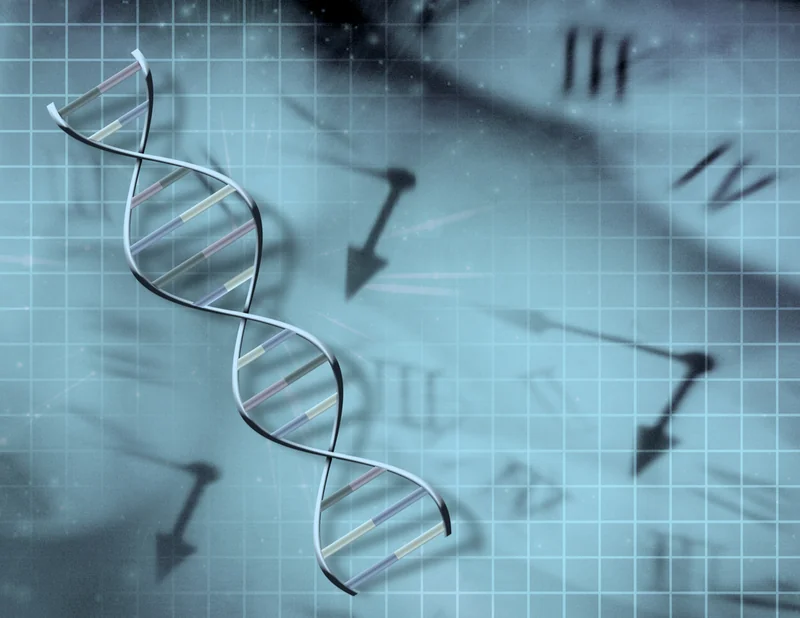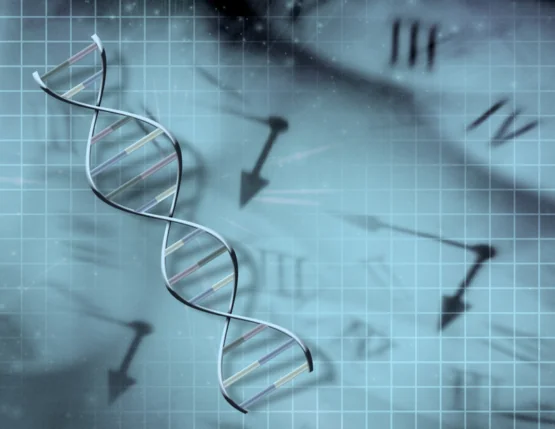Researchers at the Harvard T.H. Chan School of Public Health have discovered a new aging clock that can accurately determine both chronological and biological age in a wide variety of species.
Aging and the nucleolus
There are two kinds of age: chronological age, which is strictly the number of years that something has lived, and biological age, which is influenced by diet, exercise, environment, and similar factors. Biological age is the superior measure of true age and is an accurate predictor of all-cause mortality.
To understand how the clock works, we need to take a look at the nucleolus, the part of the cell’s nucleus where the ribosomes, the minuscule cellular machines that build proteins, are created. A significant part of the nucleolus is taken up by the ribosomal DNA (rDNA), which encodes the RNA in ribosomes.
Back in 2017, there were a couple of studies that touched upon the nucleolus as a possible indicator of longevity. The first suggested that a small nucleolus in a cell was a potential cellular hallmark of longevity and that cells with small nucleoli lived longer [1]. The second study, which was conducted the same year, showed a link between the nucleoli of normally aging cells and those of patients suffering from accelerated aging; the expansion of the nucleoli was indicative of aging, supporting that smaller, more compact, nucleoli are hallmarks of longevity [2].
However, no one asked if the rDNA is keeping time in some way.
The ribosomal clock
In the new study, the researchers set out to fill in this missing knowledge and answer this question [3]. The research team hypothesized that the rDNA is key to the genomic control of aging and could be acting as a clock.
To determine if this hypothesis is correct, they looked at the epigenetic chemical changes (methylation changes) that happen to various parts of the DNA during aging. In particular, they looked at CpG sites, regions of DNA where a cytosine nucleotide is followed by a guanine nucleotide. The study focused on the rDNA in particular, as it is a small but very active part of the genome, believing that it could be hiding an as-yet unknown aging clock.
The researchers examined genome data from mice, dogs, and humans and found that their hypothesis could be right. They saw that the CpG sites in the rDNA showed an increased level of methylation, which is also typically observed (there are exceptions) during aging on sites elsewhere on the genome.
For the next step, they studied 14-week-old mice that were on a caloric restriction diet, which reliably increases lifespan in mice when done correctly. These mice showed significantly less rDNA methylation at the CpG sites in comparison to control mice on a normal diet. The mice on caloric restriction appeared to have a lower rDNA age than their chronological age.
The researchers suggest that examining just the rDNA of the genome is as accurate as other clocks, such as the epigenetic clock, which measures methylation at hundreds of sites on the genome. If this is the case, then this could be a faster and more cost-effective way to measure aging than was previously available.
Conclusion
This could be highly useful in combination with therapies that target the aging processes, as any changes in a patient’s biological age would be apparent and confirm that an approach has worked. There are a range of aging biomarkers that researchers currently use; however, they have their limitations, so the arrival of the ribosomal clock is most welcome.
The study also highlights the importance of epigenetic alterations to DNA methylation, which likely plays a key role in the aging process. Perhaps most excitingly, we know that these changed methylation states can be reset using partial cellular reprogramming, and this has already been achieved in living animals.
Literature
[1] Tiku, V., Jain, C., Raz, Y., Nakamura, S., Heestand, B., Liu, W., … & Partridge, L. (2017). Small nucleoli are a cellular hallmark of longevity. Nature Communications, 8, 16083.
[2] Buchwalter, A., & Hetzer, M. W. (2017). Nucleolar expansion and elevated protein translation in premature aging. Nature Communications, 8(1), 328.
[3] Ribosomal DNA harbors an evolutionarily conserved clock of biological aging,” Meng Wang, Bernardo Lemos, Genome Research, online February 14, 2019, DOI: 10.1101/gr.241745.118




